Sweden has the largest scale model of the solar system in the world stretching 950km across the country.
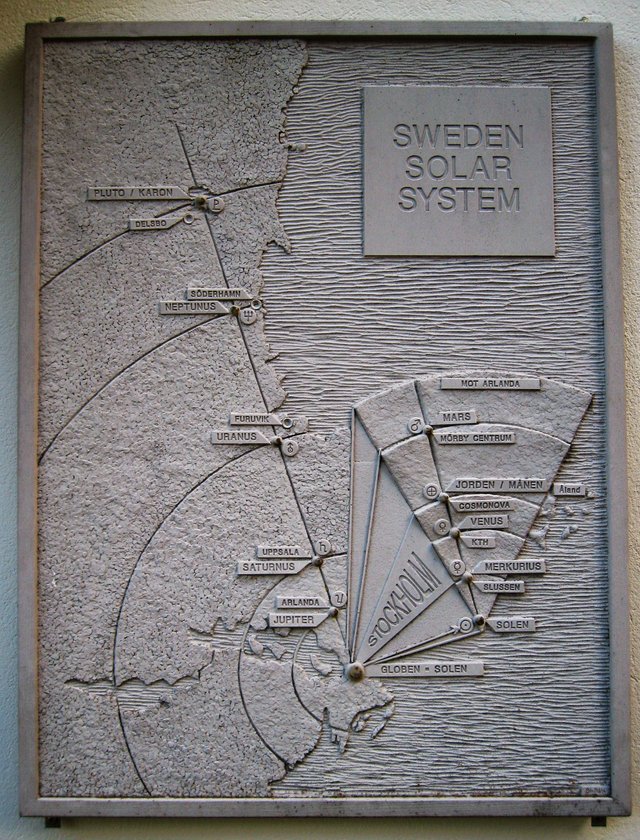
The Sweden Solar System is the world's largest model of our planetary system, built at a scale of 1:20 million and stretches the entire length of the country. The Sun is represented by the Globe arena in Stockholm, the largest spherical building in the world. The planets are placed and sized according to scale with the inner planets being in Stockholm and Jupiter at the International airport Arlanda. The outer planets follow in the same direction with Saturn in Uppsala and Pluto in Delsbo, 300 km from the Globe. The model ends at the Termination shock, 950 km from the Sun.
At each planet station, exhibits provide information about astronomy and the natural sciences, and also about related mythology and culture. The Stockholm Visitor's Board (former Stockholm Information Service) was a sponsor of the project in the beginning, like several museums, theaters, parks and scientific institutions.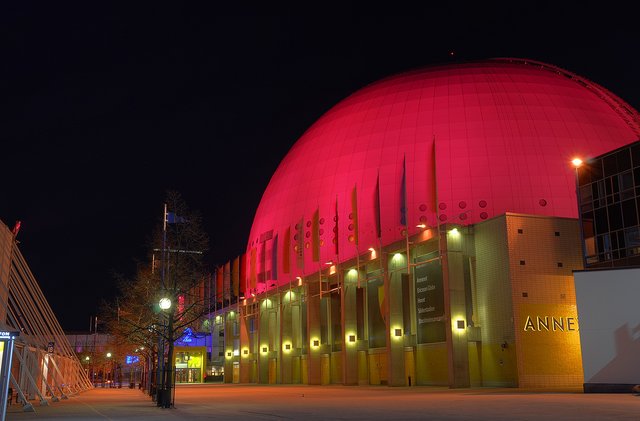
The Sun
The world's largest spherical building is 110 m in diameter, the Globe in Stockholm (aka Ericsson Globe) represents the Sun in Sweden Solar System.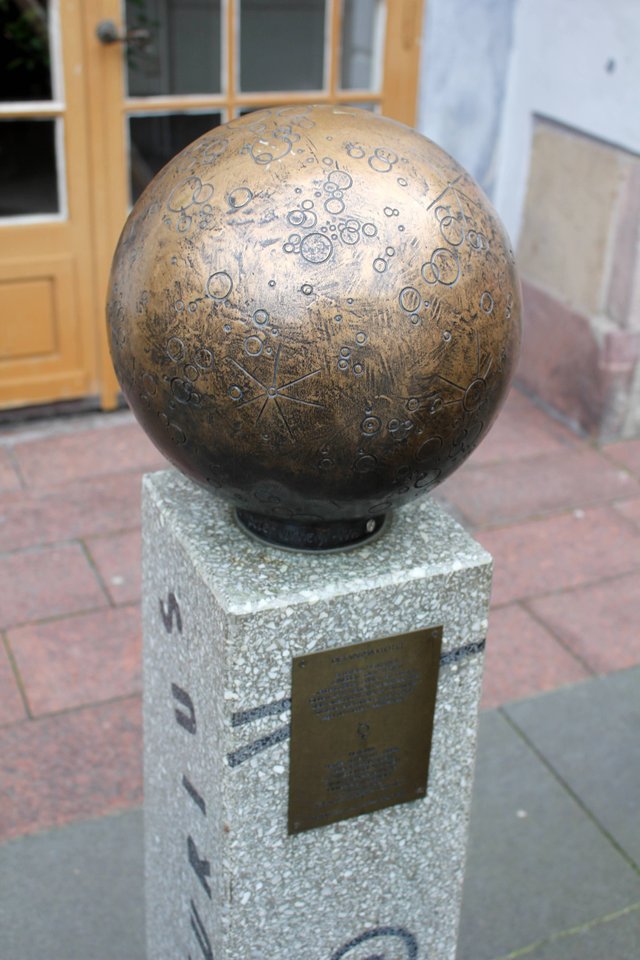
Mercury
Mercury (25 cm in diameter) is placed at Stockholm City Museum, 2,900 m from the Globe. The metal globe is electrically heated as a symbol of Mercury being a very hot planet, at least on its sunlit side.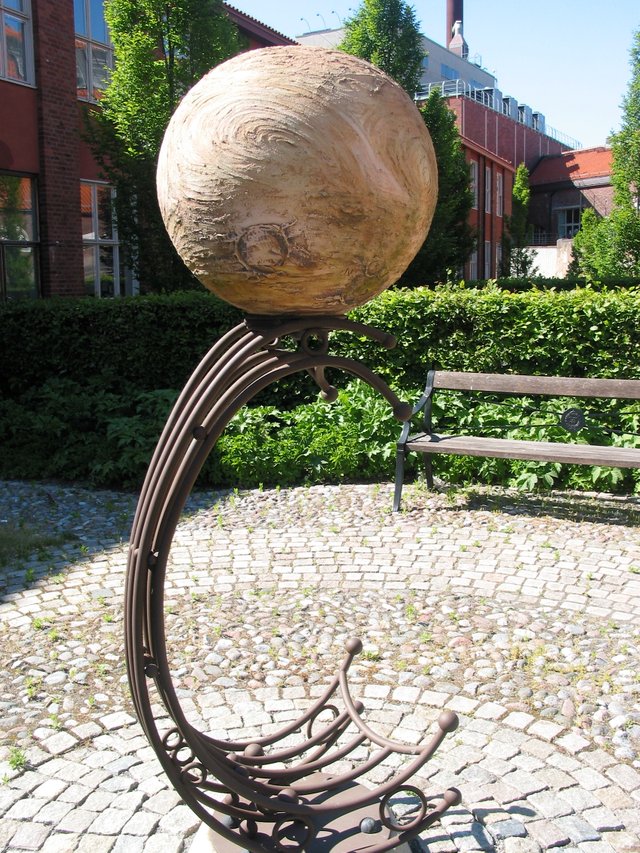
Venus
Venus (62 cm in diameter) is placed at KTH (Royal Institute of Technology), 5,500 m from the Globe. The model, made by the US artist Daniel Oberti, was inaugurated June 8, 2004, during a Venus transit. The model fell and shattered around June 11, 2011. There is another model of Venus located at the Observatory Museum.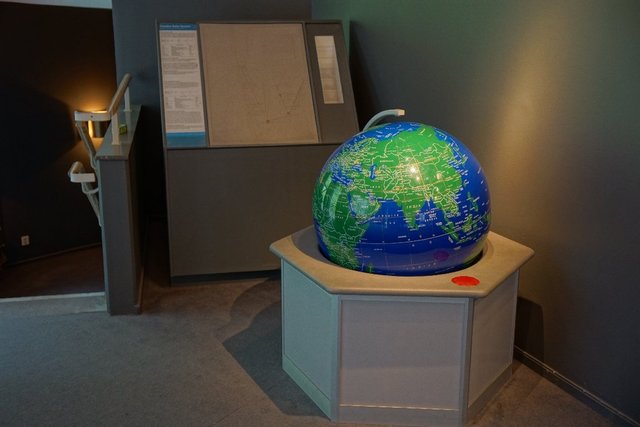
Earth
Earth (65 cm in diameter) is located at the Swedish Museum of Natural History (Cosmonova), 7,600 m from the Globe. Satellite images of the Earth are exhibited beside the Globe.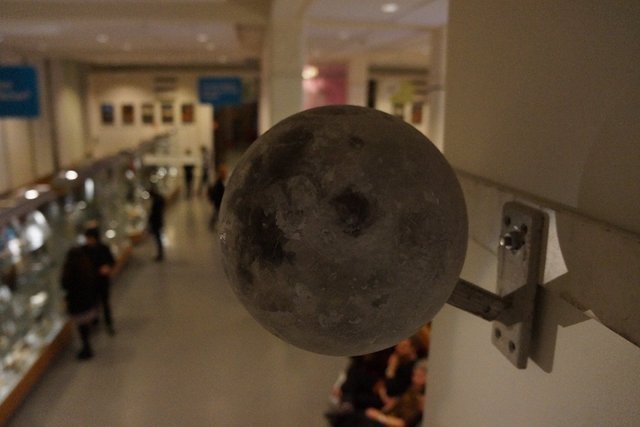
Our Moon
An elaborate model of the Moon (18 cm in diameter) is attached to one of the pillars, quite near the ceiling, in the ticket hall outside the Cosmonova Planetarium at the National Museum of Natural History in Stockholm (Cosmonova).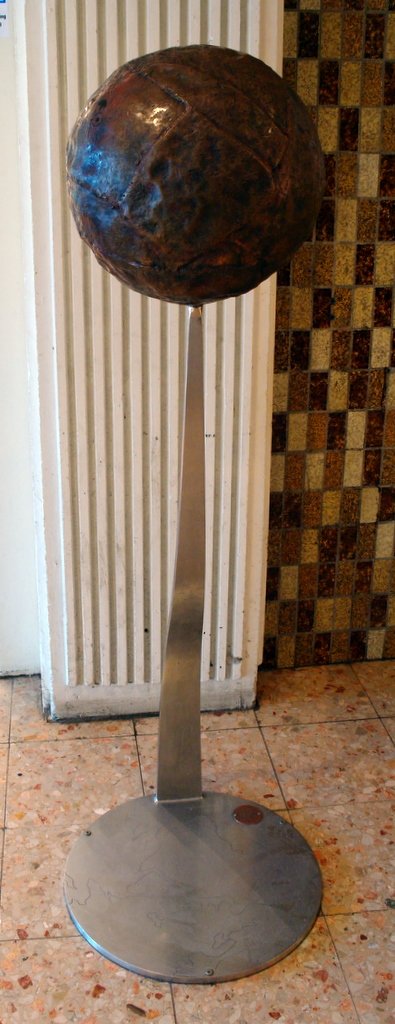
Mars
Mars (35 cm in diameter) is located at Mörby Centrum, a shopping centre in Danderyd, a suburb of Stockholm. It is 11.6 km from the Globe. The model, made in copper by the Finnish artist Heikki Haapanen, features marks that represent some typical martian chemical elements.
Jupiter
Jupiter (7.3 m in diameter) was earlier represented as a flower borden on a lawn outside Sky City at Arlanda Airport north of Stockholm 40 km from the Globe. These flowers have now been removed due to new buildings being built there; however, there are plans to build a 3D model. Made as a flower decoration, with different flowers representing different zones of the giant gas planet.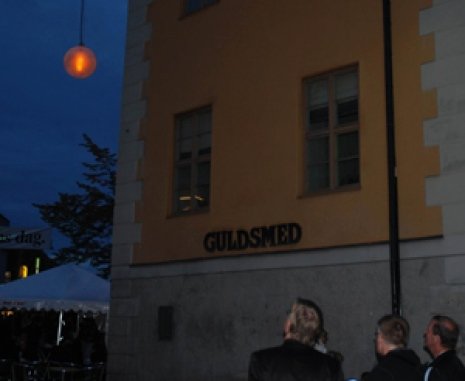
Saturn
The planet Saturn (6.1 m in diameter) will eventually crown a school planetarium in Uppsala. However, a first step was taken in 2010 when an artistic model of the moon Titan was inaugurated in central Uppsala at the Celsius House 73 km from the Globe, where the 18th century astronomer Anders Celsius worked. In addition, several Saturn moons have been given form by pupils in school classes in the area.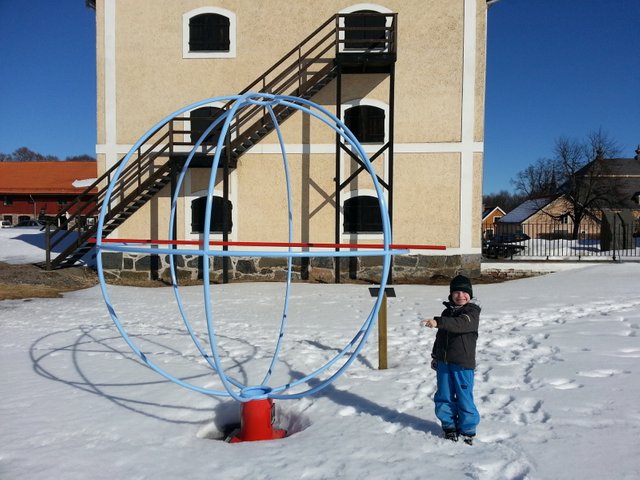
Uranus
A symbolic and playful outdoor model of Uranus was inaugurated in Oct 2012 in Lövstabruk south of Gävle 146 km from the Globe after the previous model was vandalized. The model was built in steel by Forsmark Mechanical Workshop at the Forsmark nuclear plant located close to Lövstabruk, and where the element Uranium plays an important role. The unusual tilt of Uranus’ axis is marked.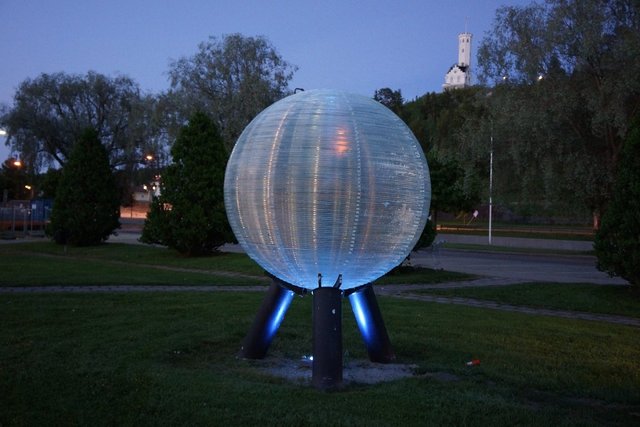
Neptune
Neptune (2.5 m in diameter) is located by the river Söderhamnsån in Söderhamn, a coast town with tradition in fishing and sailing (which relates to Neptune as the deity of the seas). Placed 229 km from the Globe, the model is made of acrylic and, at night, shines with a blue light.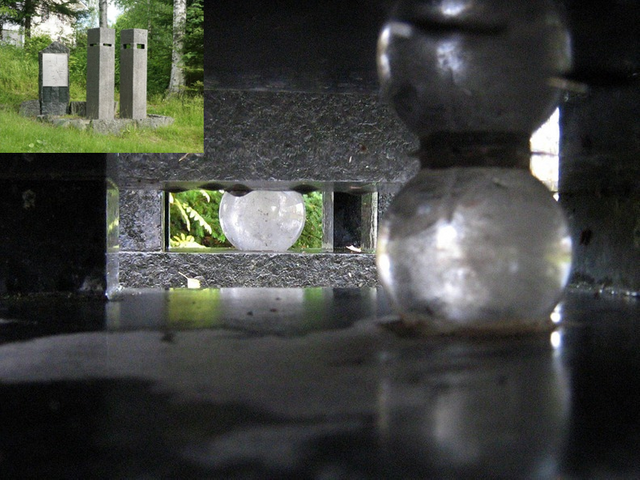
Pluto
Pluto (12 cm in diameter) and its moon Charon are placed near the southern of the Dellen lakes, in Delsbo, 300 km from the Globe. The lakes are thought to be formed by a meteorite impact 90 million years ago. The two bodies' sculptures are supported by two gravelike pillars (pictured in the upper left), made up with dellenite, a rare mineral formed at that place by the meteorite impact.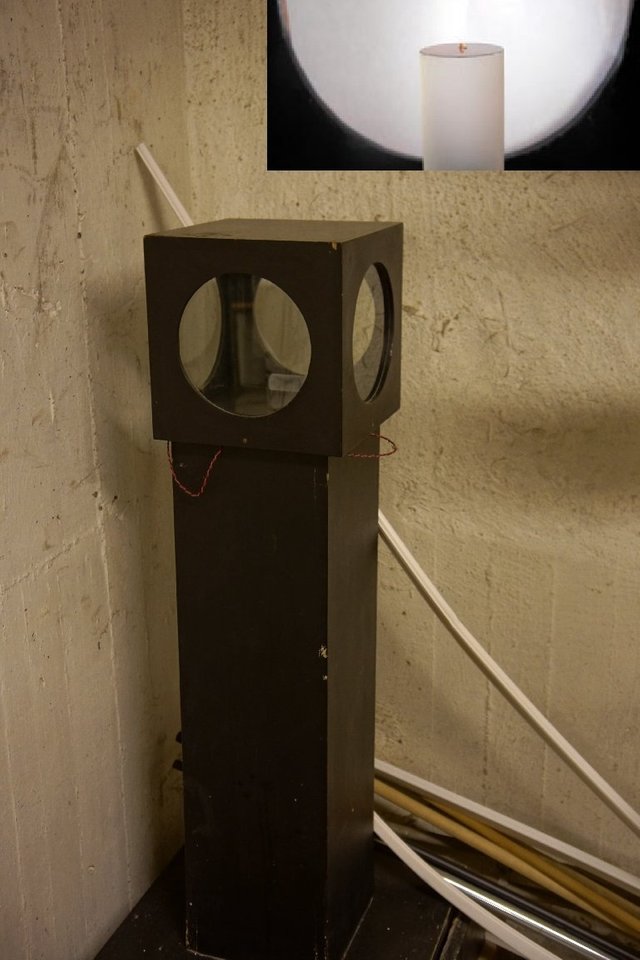
Eros
The model of Eros was represented as a small piece of gold, only two millimeters long, in a showcase at Mörbyskolan in Danderyd, north of Stockholm. That little piece of gold was stolen, and the showcase is now put away in a storage room on the school. The little picture at the top shows what it looked like before the theft.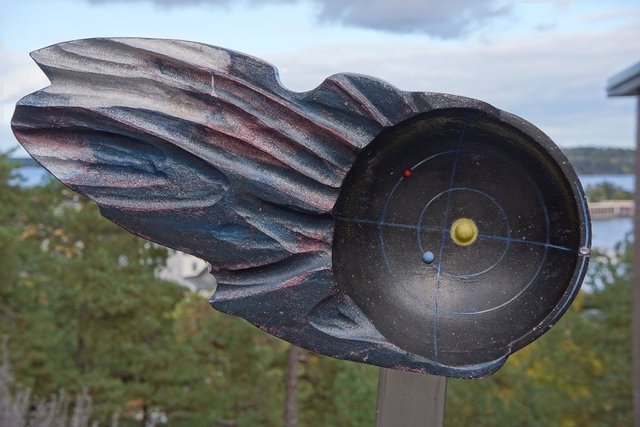
Saltis
The model of Saltis is a small grain, smaller than one millimeter, inside the bead of glass at the left of this sculpture which resides right outside Kunskapsskolan at Observatoriebacken in Saltsjöbaden east of Stockholm. The asteroid Saltis was discovered at Saltsjöbaden Observatory in 2000, and was named after the short nickname of this observatory. Nowadays this observatory has been closed down and the buildings are used as a hig school. Amateur astronomers have access to the old telescopes.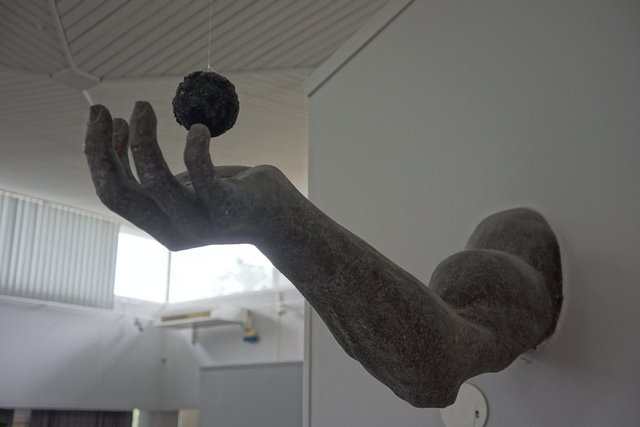
Ixion
The model of Ixion resides inside Technicus, a technical museum on Mellanholmen in Härnösand in northern Sweden. Ixion is a plutino, i.e. a small celestial body in an orbit similar to Pluto's, where it revolves twice around the Sun while Neptune revolves three times around the Sun. Except Pluto, Ixion was the first asteroid larger than Ceres discovered beyond Neptune.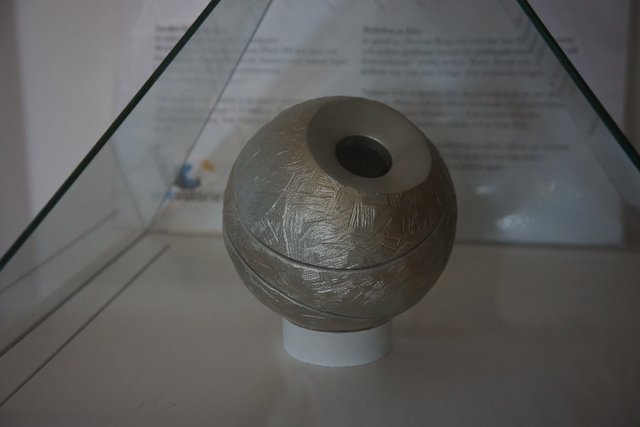
Eris
The model of Eris resides inside Umevatoriet in Umeå in northern Sweden. Eris was discovered in 2005, outside Pluto, and it revolves once around the Sun every 560 years. When Eris turned out to be a little larger than Pluto, the debate of whether Pluto is a planet or not was revived, and in 2006 Pluto lost its planetary status and was redefined as a dwarf planet. Eris is also a dwarf planet.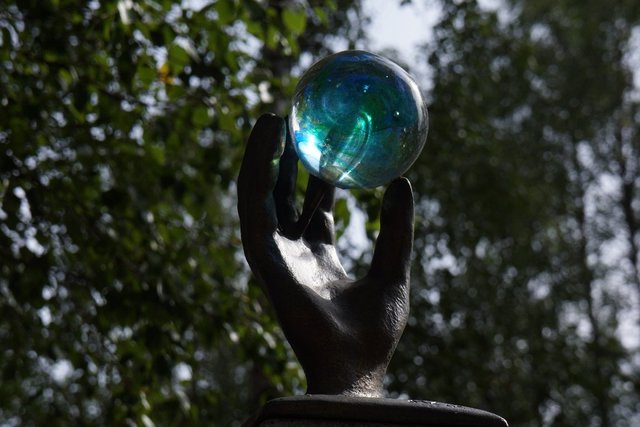
Sedna
The model of the dwarf planet Sedna is created by Arto Koskilato and was inaugurated in 2005 at the Technology in Luleå. Sedna is named after a character in the Inuit mythology, which can be described as "frozen seas goddess", and provided the Eskimos with seals and walrus.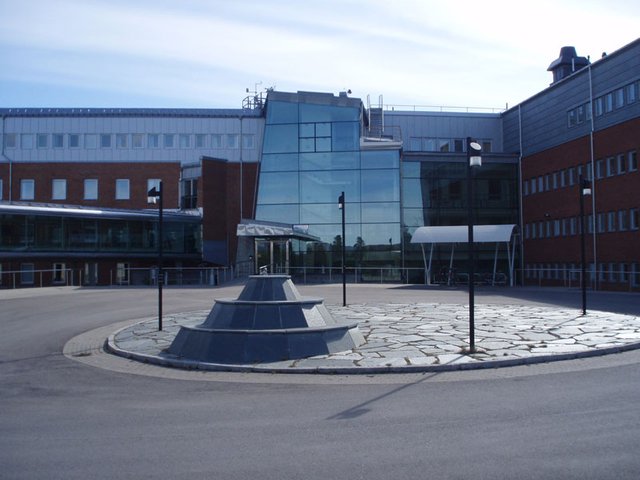
The Terminal Shock is the edge of heliosphere, the farthest place where the solar wind goes in supersonic velocity. No sculpture currently represents the terminal shock, but a foundation for a future sculpture exists at the Institute of Space Physics, 950 km from the Globe, in Kiruna, above the Arctic Circle.
#solarsystem #sweden #planets #space
If you prefer to look at it on imgur : http://imgur.com/a/pHP2O#D2E221r
Nice one @warrensteem I see @berniesanders thought so too. I know I thought it was cool. I actually would love to visit those sites someday. Who knows.
full $teem Ahead!
@streetstyle
Thanks so much @streetstyle :D
You're Welcome @warrensteem . Glad that we all could contribute.
full $teem ahead!
@streetstyle
ps. Don't forget to Up Vote as well, that pays too!